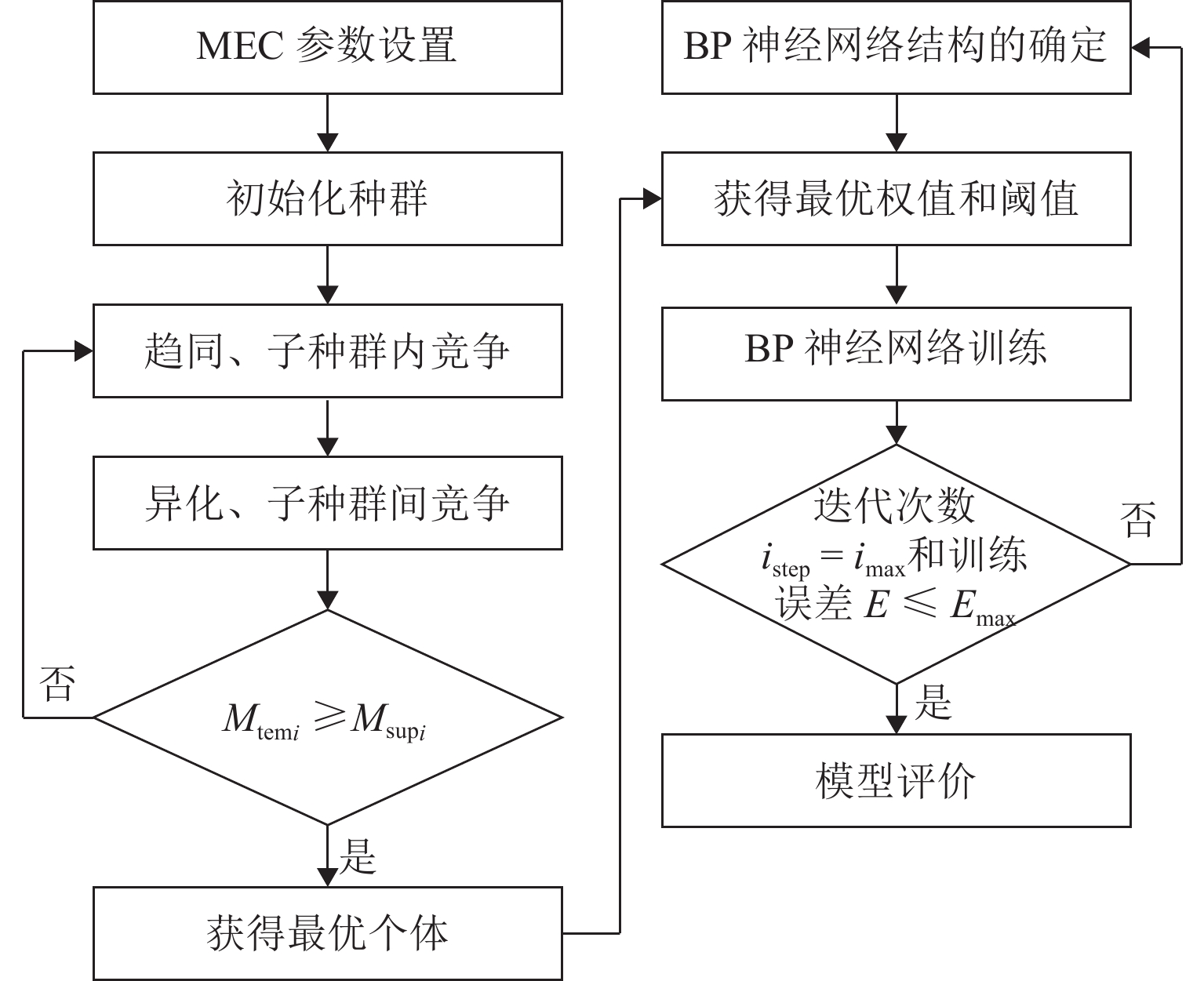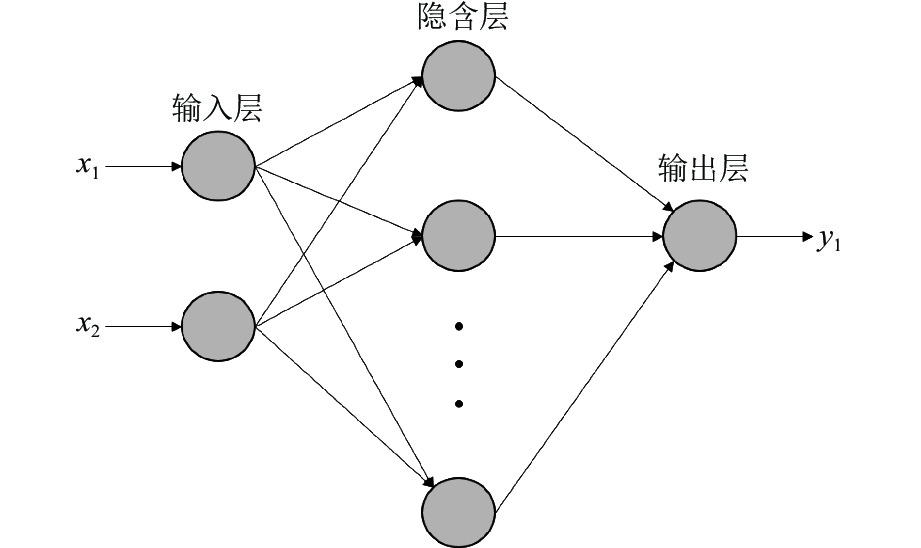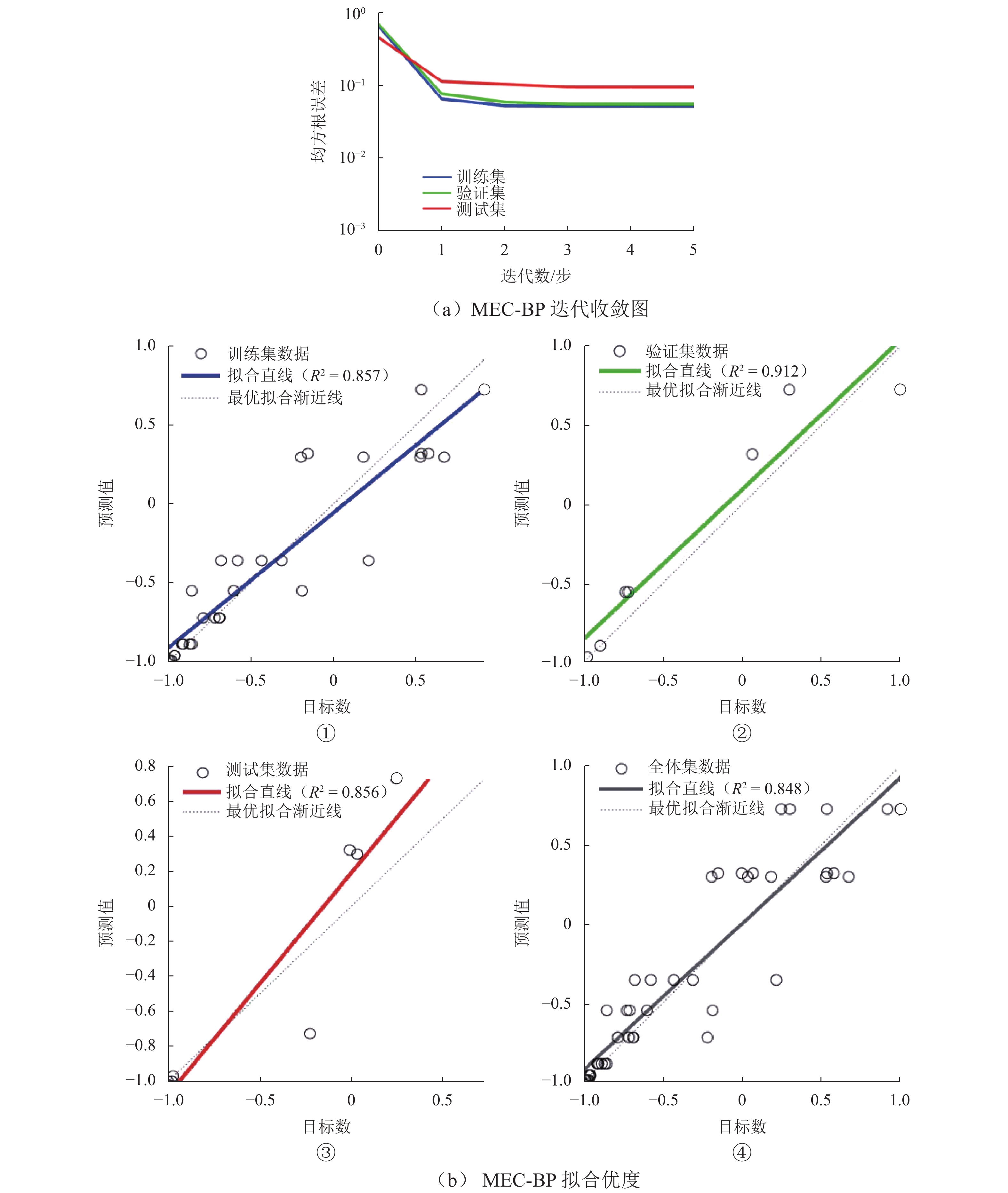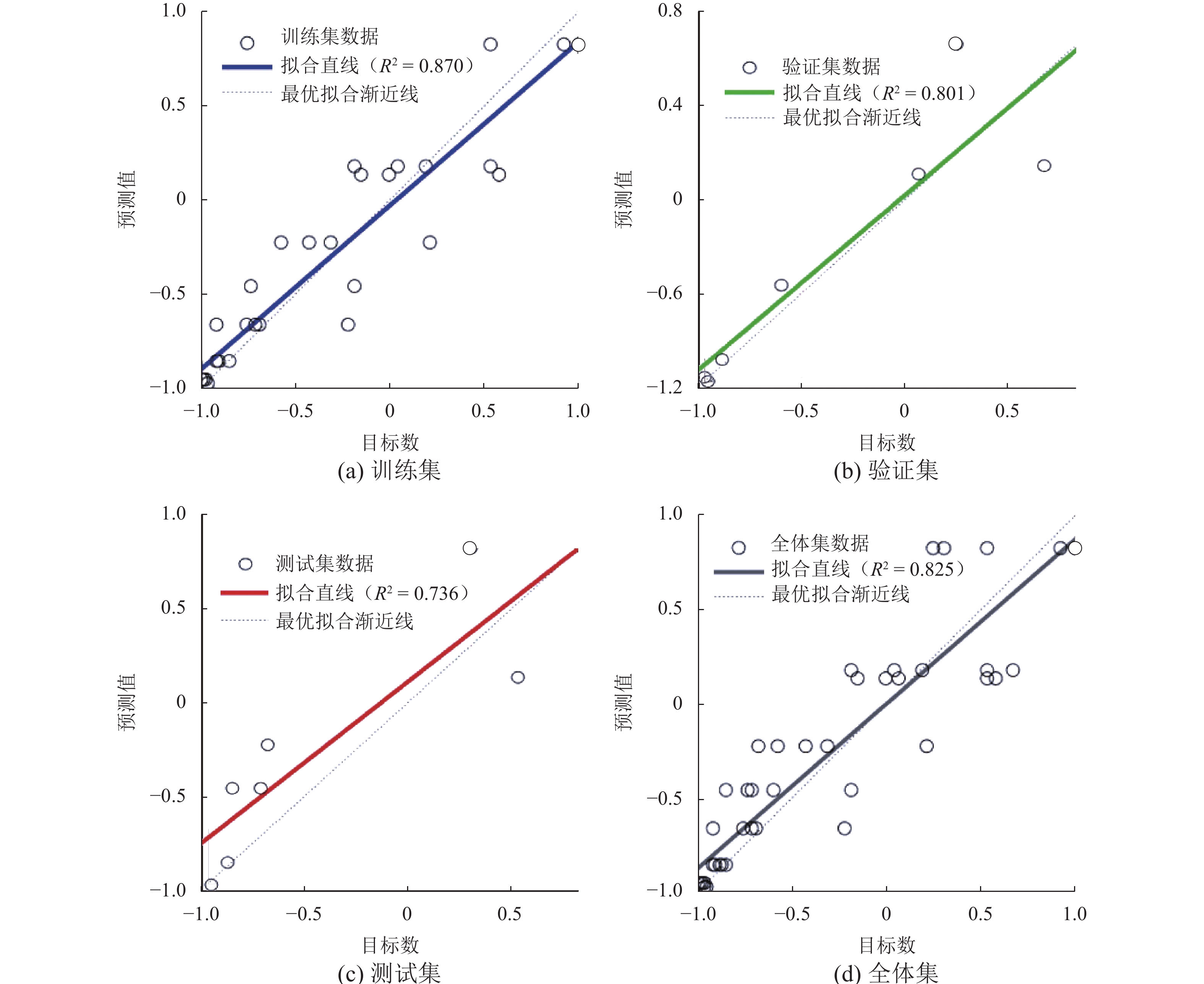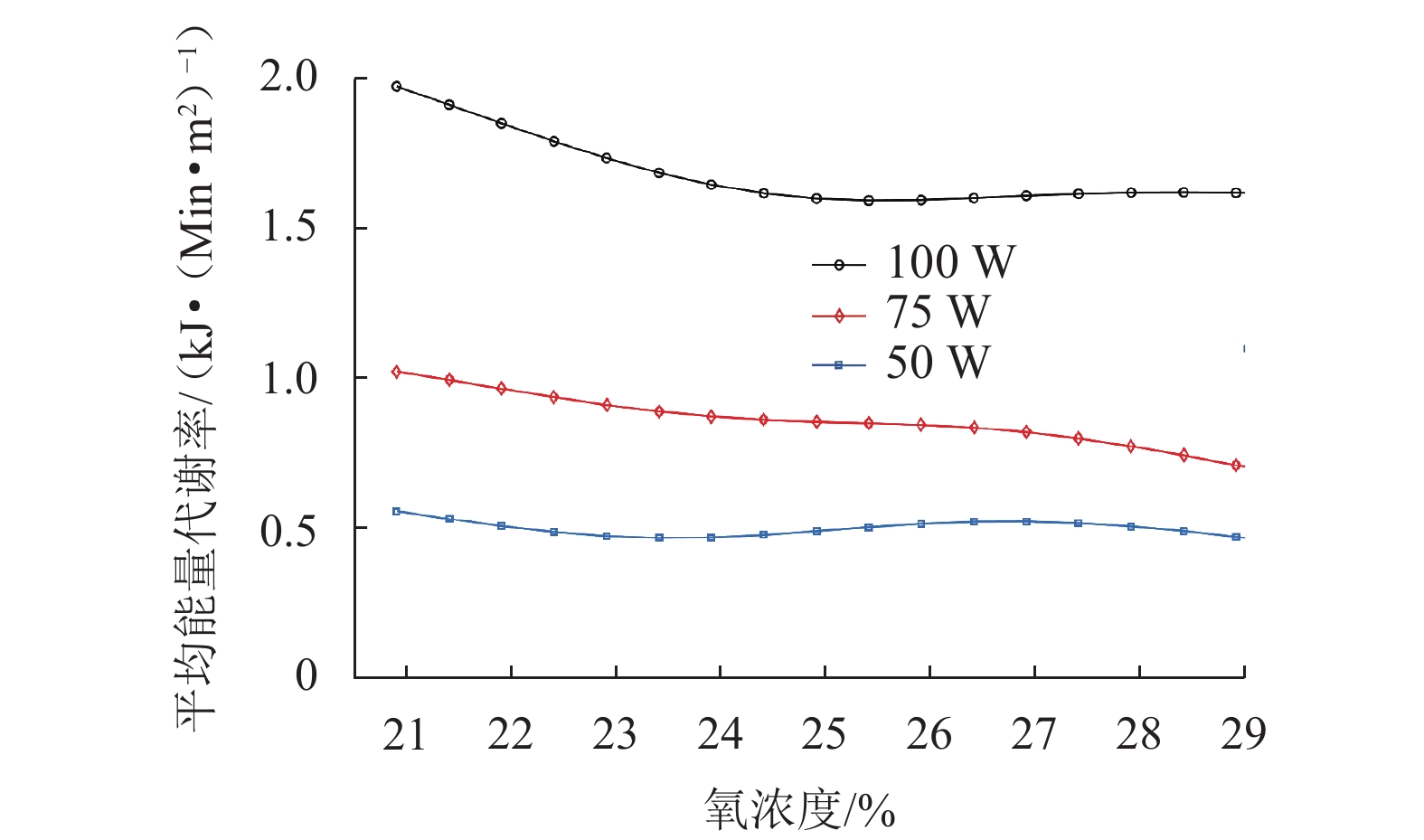Influence of Sand Sampling Method on Bearing Capacity Calculation of Shallow Foundation in Discrete Element Method
-
摘要:
离散元数值模拟中,不同的制样方法会导致土体孔隙比和均匀性存在差异,进而对浅基础承载力的模拟计算结果产生影响,因此需要分析不同制样对浅基础承载力影响的问题. 本文分别使用粒径放大法、Distribute法、GM (grid method)法和欠层压实法对无黏性砂土进行制样,且试样在10
g 的重力场下进行地应力平衡;利用测量圆对不同位置土体孔隙比、水平应力和竖直应力进行监测,得到试样平均孔隙比e 和小于1的侧向土压力系数K 0值;通过在试样表面放置刚性墙体并以相同的速度加载来模拟浅基础承载力试验,研究不同制样方法对浅基础承载力的影响. 研究结果表明:GM法与欠层压实法生成的试样,其孔隙比接近最初设置的目标孔隙比,误差约为3.5%;而粒径放大法与Distribute法生成的试样,其孔隙比会小于目标孔隙比,误差为20.0%左右;在试样整体均匀性方面,GM法得到的试样均匀性最好,随后依次是欠层压实法、Distribute法和粒径放大法;由于不同制样方法所得的试样孔隙比和K 0不同,在浅基础承载力模拟计算中不同制样方法得到的承载力关系为:GM法 < 欠层压实法 < 粒径放大法 < Distribute法.Abstract:In the discrete element numerical simulation, different sample preparation methods will lead to differences in soil void ratio and uniformity, which will affect the simulation results of bearing capacity of shallow foundation. Therefore, it is necessary to analyze the influence of different sample preparation on bearing capacity of shallow foundation. Four methods (e.g., particle amplification method, distribute method, grid method, and under compaction method) were used to prepare the samples of cohesionless sand, and the samples were balanced under the gravity field of 10
g . The void ratio, horizontal stress and vertical stress of soil at different positions were monitored by measuring circle, and the average void ratioe and the lateral earth pressure coefficientK 0 value less than 1 were obtained. The influence of different sample preparation methods on the bearing capacity of shallow foundation was studied by placing rigid wall on the surface of the sample and loading at the same speed to simulate the bearing capacity test of shallow foundation. The results show that the porosity ratios of samples generated by the GM and under compaction method are closer to the original target porosity ratio with an error of about 3.5%. In comparison, the porosity ratios generated by particle amplification method and distribute method are smaller than the target porosity ratio, with an error of about 20.0%. Additionally, GM presents the most homogeneous sand samples, followed by the under compaction method, distribute method and particle amplification method, respectively. Due to the varying porosity ratios andK 0 of samples, the obtained bearing capacity of shallow foundation also changes. The relationship of bearing capacity obtained by different sample preparation methods in the simulation of bearing capacity of shallow foundation is : GM < underlayer compaction method < particle size amplification method < distribute method. -
随着我国西部大开发的不断开展,高海拔隧道建设越来越多,规划建设的某高原铁路沿线海拔多高于3 km,桥隧比在80%以上,拥有数座长度超过20 km的铁路隧道. 为克服高海拔隧道施工低压低氧的困难,保障施工人员工作效率及生理健康,供氧是最直接的改善措施之一. 众多学者对高海拔供氧进行了相关研究,郭春等[1-2]研究了高海拔供氧标准,得到了不同劳动强度和不同海拔高度下人体最低需氧量;孙志涛[3]对高海拔施工缺氧进行了分级,得到了高海拔隧道施工氧含量的控制标准;王明年等[4-5]对高海拔施工供氧技术进行了总结,得到高海拔供氧技术,包含个人携氧供氧、弥散式供氧、综合供氧、氧吧车供氧和室内鼻息式供氧,在不同隧道施工工序下应组合供氧方法和供氧系统,以适应不同劳动强度下施工人员的供氧需求和心理需求;谢文强[6]对高海拔隧道施工供氧标准进行了研究,得到了不同海拔高度人体所需最小耗氧量和通气量;严涛等[7]对高海拔供氧参数进行研究,建议海拔高度在3 000 m以上施工进行供氧. 目前高海拔隧道施工供氧方面的研究,主要集中在供氧标准及供氧方式两部分,研究手段基本以理论分析与公式推导为主,缺少现场的实际测试.
在数据拟合方面,BP (back propagation)神经网络目前在多维变量拟合应用中较多,由于BP神经网络自身存在收敛慢、波动大的缺陷[8-10],大量学者基于BP神经网络做了较多优化,并进行了应用. Wang 等[11]通过MEC-BP神经网络对箱梁施工扰度进行了拟合预测,得到MEC-BP神经网络拟合预测结果优于BP神经网络结构;李步遥等[12]基于MEC-BP神经网络对基坑水平位移进行了反演分析,得到MEC-BP神经网络收敛速度快于GA-BP神经网络[8],且结果优于GA-BP (genetic algorithms back propagation)神经网络和BP神经网络;王春晓等[13]基于MEC-BP神经网络对群桩轴力进行预测,得到MEC-BP神经网络预测精度及准确度明显高于BP神经网络.
本文通过高海拔隧道供氧实验,对高海拔隧道施工人员进行现场测试,并运用MEC-BP神经网络对现场测试数据进行拟合,研究高海拔人员劳动功率和氧浓度对劳动强度的影响规律,其中劳动强度通过平均能量代谢率表示.
1. MEC-BP神经网络模型简介
1.1 BP神经网络
BP神经网络算法[11]是一种基于输出误差逆向传播的多层前馈神经网络算法,对于三层前馈神经网络,其基本结构由输入层、隐含层、输出层构成,根据神经网络层建立的输入输出函数Q以及误差函数E 分别为
Q=ψ(m∑j=1wjkyi−θk)=ψ(m∑j=1wjkφ(n∑i=1wikxi−θj)−θk), (1) E=12SS∑t=1(Tt−Ot)2, (2) 式中:
ψ(•) 和φ(•) 分别为输出层和隐含层的传递函数;wjk 、wik 分别为第k个输出层下的第j个隐含层和第i个输入层的连接权重;θj 、θk 分别为第j个隐含层和第k个输出层的阈值;S为样本数量; O t为第t个样本预测输出值;xi 和yi 分别为隐含层输入和输出值;Tt 为实验测试值.由于BP神经网络算法存在收敛慢和局部最小值的缺陷,接下来引入思维进化算法(MEC)对BP神经网络进行优化.
1.2 MEC算法
MEC算法[11]是一种基于遗传算法改进的优化算法,运用MEC算法对BP神经网络的权值和阈值进行最优搜索,能提高BP神经网络的收敛速度和精度. 其基本步骤如下:
步骤1 种群初始化. 先将总体随机分成a个个体(m1,m2,…,ma),通过式(3)对各个体进行打分,并根据分数将个体分为w个优等子种群(每个优等种群包含b个个体)和r个临时子种群(每个临时种群包含h个个体)两大类,这两个种群分别用Msupi和Mtemi表达,如式(4)所示.
S=11+E, (3) {Msupi={m1,m2,⋯,mb},i=1,2,⋯,w,Mtemi={m1,m2,⋯,mh},i=1,2,⋯,r. (4) 步骤2 种群内竞争. 选出在每个子种群中得分最高的个体,按照正态分布将得分重新排序并再次进行得分计算,当最高得分者保持不变时,该最高得分者所在子种群即视为成熟,最高得分即代表该子种群得分.
步骤3 种群间竞争. 如果临时子种群(Stemi)得分高于成熟的优等子种群(Ssupi),那么成熟的优等种群将会被该临时种群替代. 相反,如果临时种群得分较低,那么该临时种群将会解散,再重新生成新的临时种群,步骤2将产生新的临时种群.
1.3 MEC-BP神经网络拟合预测模型
MEC-BP神经网络拟合预测模型框架如图1所示. 图中:imax、Emax分别为最大迭代次数和最大误差.
其基本流程为根据所选数据结构确定BP神经网络结构,通过MEC方法优化获得BP神经网络权值和阈值,进而得到优化的BP神经网络,通过优化的BP神经网络对给予的测试数据进行验证和预测.
2. 高海拔隧道供氧实验
高海拔供氧实验在西藏拉萨达孜区的圭嘎拉隧道进行,实验地点海拔高度约为4 200 m,实验测试对象为现场6名隧道技术施工人员,年龄在20岁~30岁,现场测试及仪器如图2所示.
实验通过调节供氧端制氧含量来设置供氧浓度,根据相关资料研究的氧浓度安全上限和实验的安全性[6, 14],供氧浓度设置为20.9%、25.0%和29.0%,通过调节骑行台设置50、75、100 W的骑行功率. 实验中,每位测试人员需在不同的氧浓度和骑行功率下骑行10 min,最后记录肺通量和相关生理参数. 根据相关肺通量和平均能量代谢率关系式[15-16],将标准化后的肺通量数值按照式(4)计算平均能量代谢率,现场测试及计算数据如表1所示.
表 1 现场测试及计算数据Table 1. Field test and calculation data测试人员
编号氧浓度/% 功率/W 肺通量/(L·min−1) A/m2 测试环境温度/K 标准肺通气量/
(L·min−1)平均能量代谢率/
(kJ·(min·m2)−1)1 号 20.9 50 10.52 1.86 298.15 5.78 0.57 25.0 50 7.88 1.86 286.15 4.51 0.50 29.0 50 7.29 1.86 284.15 4.20 0.48 20.9 75 20.03 1.86 296.15 11.08 0.96 25.0 75 17.07 1.86 288.15 9.71 0.69 29.0 75 17.02 1.86 290.15 9.61 0.67 20.9 100 32.75 1.86 298.15 18.00 2.21 25.0 100 27.88 1.86 292.15 15.64 1.80 29.0 100 27.94 1.86 292.15 15.67 1.80 2 号 20.9 50 9.75 1.80 299.15 5.34 0.56 25.0 50 7.52 1.80 292.15 4.22 0.49 29.0 50 6.73 1.80 284.15 3.88 0.47 20.9 75 20.45 1.80 298.15 11.24 1.06 25.0 75 18.12 1.80 298.15 9.96 0.81 29.0 75 16.41 1.80 284.15 9.46 0.71 20.9 100 27.54 1.80 298.15 15.13 1.80 25.0 100 23.89 1.80 290.15 13.49 1.50 29.0 100 22.87 1.80 289.15 12.96 1.39 3 号 20.9 50 8.64 1.72 298.15 4.75 0.53 25.0 50 7.39 1.72 291.15 4.16 0.50 29.0 50 6.91 1.72 283.15 4.00 0.49 20.9 75 23.56 1.72 297.15 12.99 1.52 25.0 75 20.45 1.72 298.15 11.24 1.17 29.0 75 19.31 1.72 285.15 11.10 1.14 20.9 100 29.44 1.72 298.15 16.18 2.14 25.0 100 26.56 1.72 289.15 15.05 1.92 29.0 100 25.44 1.72 285.15 14.62 1.84 4 号 20.9 50 10.74 1.85 298.15 5.90 0.59 25.0 50 7.86 1.85 291.15 4.42 0.49 29.0 50 6.66 1.85 282.15 3.87 0.46 20.9 75 18.64 1.85 295.15 10.35 0.83 25.0 75 16.24 1.85 292.15 9.11 0.59 29.0 75 13.52 1.85 284.15 7.80 0.53 20.9 100 25.79 1.85 298.15 14.17 1.55 25.0 100 22.17 1.85 300.15 12.10 1.17 29.0 100 21.25 1.85 283.15 12.30 1.20 5 号 20.9 50 10.22 1.99 298.15 5.62 0.54 25.0 50 8.54 1.99 292.15 4.79 0.49 29.0 50 7.47 1.99 282.15 4.34 0.47 20.9 75 19.39 1.99 298.15 10.66 0.74 25.0 75 18.72 1.99 292.15 10.50 0.71 29.0 75 18.35 1.99 283.15 10.62 0.73 20.9 100 28.27 1.99 298.15 15.54 1.60 25.0 100 25.88 1.99 299.15 14.17 1.37 29.0 100 24.33 1.99 285.15 13.98 1.33 6 号 20.9 50 9.99 1.85 298.15 5.49 0.56 25.0 50 7.35 1.85 291.15 4.14 0.48 29.0 50 6.19 1.85 282.15 3.59 0.45 20.9 75 19.31 1.85 298.15 10.61 0.88 25.0 75 19.17 1.85 294.15 10.68 0.89 29.0 75 18.84 1.85 292.15 10.57 0.87 20.9 100 27.5 1.85 300.15 15.01 1.70 25.0 100 26.09 1.85 299.15 14.29 1.57 29.0 100 25.13 1.85 289.15 14.24 1.56 VE=V1P1TPT1, (5) {lgM=0.0945VEA−0.53394,VE∈(3.0,7.3),M=100.0945VEA−0.53394+13.26−101.1648−0.01258VEA2,lg(13.26−M)=1.1648−0.01258VEA,VE⩾8.0,VE∈[7.3,8.0), (6) 式中:
VE 为标准状态肺通气量(L/min);V1 为相应海拔高度下肺通气量(L/min);P为标准大气压(101.325 kPa);P1为相应海拔高度下大气压(实测取60.8 kPa);T为标准状态温度(273.15 K);T1为相应海拔高度下温度(K);M为平均能量代谢率(kJ/(min•m2));A为体表面积(m2),如式(7).A=0.0061H+0.0124W−0.0099, (7) 式中:H为身高(cm);W为体重(kg).
从测试数据中看出,高海拔施工人员平均能量代谢率较低,且在100 W时最大平均能量代谢率为2.21 kJ/(min•m2);高海拔施工人员平均能量代谢率随着功率增加而增加,在相同骑行功率下,平均能量代谢率随着氧浓度增加有减小趋势,且在100 W骑行功率减小较为明显.
3. MEC-BP神经网络算法拟合结果
根据数据特征,输入神经元选2个(功率、氧浓度),隐藏神经元个数取为10个,输出神经元为1个(平均新陈代谢率),种群规模大小取为100,训练数据取前5个人的45个数据,测试数据取最后1个人的9个数据. 神经网络结构如图3所示. 运用MATLAB R2016a对测试数据进行拟合,MEC-BP迭代次数及拟合优度如图4所示. 图5和图6分别给出了GA-BP和BP神经网络拟合优度及均方误差. 根据式(2)计算出MEC-BP、GA-BP、BP神经网络测试值与预测值均方误差分别为0.0139、0.0130、0.0255. 从拟合优度可以看出,MEC-BP神经网络优化算法相对较好,且均方误差较小,在计算过程中收敛速度快,在第4迭代步时验证集拟合均方根误差达到最小值0.054,在短时间内通过训练能达到较高拟合度,且训练、验证和测试的拟合优度较为平稳.
从图7可以看出:在骑行功率为50 W时,平均能量代谢率随氧浓度变化不明显;在骑行功率为75 W时,平均能量代谢率随着氧浓度增加而减小,减小梯度小于100 W时变化曲率;在功率100 W时,当氧浓度小于25%时,平均能量代谢率随着氧浓度增加逐渐减小,当氧浓度大于25%时,平均能量代谢率随着氧浓度增加趋于平稳.
4. 结 论
通过在高海拔进行高原供氧实验,运用MEC-BP神经网络优化算法对高海拔供氧测试数据进行了拟合,得到如下结论:
1) 通过MEC-BP神经网络拟合的测试数据可以看出,拟合曲线变化规律与现场测试数据变化规律基本一致,验证了MEC-BP神经网络拟合的有效性.
2) 通过不同算法对比分析了高原供氧数据拟合结果的准确性,MEC-BP神经网络在测试、验证和训练的拟合优度上相对稳定且精度较高,均方误差较小,拟合效果较好,可为多维数据拟合提供参考.
3) 通过高海拔现场测试和MEC-BP神经网络拟合数据得到,50 W和75 W骑行功率下平均能量代谢率随氧浓度变化较小,100 W骑行功率下平均能量代谢率随氧浓度变化较大;25%供氧浓度可以作为4 200 m高海拔较高劳动强度的供氧浓度参考值.
致谢:成都哲学社会科学规划项目(2019CS107);成都市科技项目(2019-YFYF-00121-SN).
-
表 1 模型细观参数
Table 1. Microscopic parameters of the model
参数 值 粒径/mm 0.8~1.2 颗粒密度/(kg•m−3) 2650 初始孔隙比 0.2 颗粒法向刚度 kn/ (N•m−1) 5 × 107 颗粒切向刚度 ks/ (N•m−1) 2.5 × 107 墙体法向刚 knw/ (N·m−1) 1 × 109 墙体切向刚 ksw/ (N•m−1) 1 × 109 初始摩擦系数 μ1 8.7 × 10−4 最终摩擦系数 μ2 0.839 墙体与颗粒摩擦系数 μ3 0 表 2 试样的极限承载力
Table 2. Ultimate bearing capacity of samples
制样方法 试样 e 均匀性 极限承载力/kPa GM 法 G-S 0.194 1 12.00 欠层压实法 Q-S 0.193 2 12.50 Distribute 法 D-S 0.157 3 18.19 粒径放大法 L-S 0.164 4 14.30 -
[1] CUNDALL P A, STRACK O D L. A discrete numerical model for granular assemblies[J]. Géotechnique, 1979, 29(1): 47-65. [2] JIANG M J, JIANG T, CROSTA G B, et al. Modeling failure of jointed rock slope with two main joint sets using a novel DEM bond contact model[J]. Engineering Geology, 2015, 193: 79-96. doi: 10.1016/j.enggeo.2015.04.013 [3] BYM T, MARKETOS G, BURLAND J B, et al. Use of a two-dimensional discrete-element line-sink model to gain insight into tunnelling-induced deformations[J]. Géotechnique, 2013, 63(9): 791-795. [4] ZHENG G, YANG X Y, ZHOU H Z, et al. A simplified prediction method for evaluating tunnel displacement induced by laterally adjacent excavations[J]. Computers and Geotechnics, 2018, 95: 119-128. doi: 10.1016/j.compgeo.2017.10.006 [5] LIU Z N, KOYI H A. Kinematics and internal deformation of granular slopes: insights from discrete element modeling[J]. Landslides, 2013, 10(2): 139-160. doi: 10.1007/s10346-012-0318-8 [6] XU W J, DONG X Y. Simulation and verification of landslide tsunamis using a 3D SPH-DEM coupling method[J]. Computers and Geotechnics, 2021, 129: 103803.1-103803.16. [7] CHANG C S, CHAO S J. Discrete element method for bearing capacity analysis[J]. Computers and Geotechnics, 1991, 12(4): 273-288. doi: 10.1016/0266-352X(91)90026-C [8] Itasca. Particle flow code in two dimensions[M]. Minnesota: Itasca Consulting Group, Inc. 2004. [9] 戴轩,郑刚,程雪松,等. 基于DEM-CFD方法的基坑工程漏水漏砂引发地层运移规律的数值模拟[J]. 岩石力学与工程学报,2019,38(2): 396-408.DAI Xuan, ZHENG Gang, CHENG Xuesong, et al. Numerical simulation of ground movement induced by leakage of groundwater and sand in excavations based on the DEM-CFD method[J]. Chinese Journal of Rock Mechanics and Engineering, 2019, 38(2): 396-408. [10] 徐琨,周伟,马刚,等. 基于离散元法的颗粒破碎模拟研究进展[J]. 岩土工程学报,2018,40(5): 880-889. doi: 10.11779/CJGE201805013XU Kun, ZHOU Wei, MA Gang, et al. Review of particle breakage simulation based on DEM[J]. Chinese Journal of Geotechnical Engineering, 2018, 40(5): 880-889. doi: 10.11779/CJGE201805013 [11] 金磊,曾亚武. 土石混合体宏细观力学特性和变形破坏机制的三维离散元精细模拟[J]. 岩石力学与工程学报,2018,37(6): 1540-1550.JIN Lei, ZENG Yawu. Refined simulation for macro-and meso-mechanical properties and failure mechanism of soil-rock mixture by 3D DEM[J]. Chinese Journal of Rock Mechanics and Engineering, 2018, 37(6): 1540-1550. [12] 景路,郭颂怡,赵涛. 基于流体动力学-离散单元耦合算法的海底滑坡动力学分析[J]. 岩土力学,2019,40(1): 388-394.JING Lu, GUO Songyi, ZHAO Tao. Understanding dynamics of submarine landslide with coupled CFD-DEM[J]. Rock and Soil Mechanics, 2019, 40(1): 388-394. [13] 徐文杰. 滑坡涌浪流-固耦合分析方法与应用[J]. 岩石力学与工程学报,2020,39(7): 1420-1433.XU Wenjie. Fluid-solid coupling method of landslide tsunamis and its application[J]. Chinese Journal of Rock Mechanics and Engineering, 2020, 39(7): 1420-1433. [14] 马华庆,赵永志. 喷动流化床中杆状颗粒混合特性的CFD-DEM模拟[J]. 浙江大学学报(工学版),2020,54(7): 1347-1354. doi: 10.3785/j.issn.1008-973X.2020.07.013MA Huaqing, ZHAO Yongzhi. CFD-DEM investigation on mixing of rod-like particles in spout-fluid bed[J]. Journal of Zhejiang University (Engineering Science), 2020, 54(7): 1347-1354. doi: 10.3785/j.issn.1008-973X.2020.07.013 [15] CHO S E, LEE S R. Instability of unsaturated soil slopes due to infiltration[J]. Computers and Geotechnics, 2001, 28(3): 185-208. doi: 10.1016/S0266-352X(00)00027-6 [16] CHEN X Y, ZHANG L L, ZHANG L M, et al. Modelling rainfall-induced landslides from initiation of instability to post-failure[J]. Computers and Geotechnics, 2021, 129: 103877.1-103877.16. [17] YANG S C, CI W, LESHCHINSKY B, et al. Scale effects on the ultimate bearing capacity of rectangular footings placed on slopes[J]. Computers and Geotechnics, 2021, 137: 104254.1-104254.7. [18] YANG S C, LESHCHINSKY B, CUI K, et al. Influence of failure mechanism on seismic bearing capacity factors for shallow foundations near slopes[J]. Géotechnique, 2021, 71(7): 594-607. [19] YANG S C, LESHCHINSKY B, CUI K, et al. Unified approach toward evaluating bearing capacity of shallow foundations near slopes[J]. Journal of Geotechnical and Geoenvironmental Engineering, 2019, 145(12): 04019110.1-04019110.16. [20] NG T T, MEYERS R. Side resistance of drilled shafts in granular soils investigated by DEM[J]. Computers and Geotechnics, 2015, 68: 161-168. doi: 10.1016/j.compgeo.2015.04.009 [21] WANG Z J, JACOBS F, ZIEGLER M, et al. Visualisation and quantification of geogrid reinforcing effects under strip footing loads using discrete element method[J]. Geotextiles and Geomembranes, 2020, 48(1): 62-70. doi: 10.1016/j.geotexmem.2019.103505 [22] FU Z Z, CHEN S S, LIU S H. Discrete element simulations of shallow plate-load tests[J]. International Journal of Geomechanics, 2016, 16(3): 1-12. [23] XU R, LIU E L, JIANG X Q, et al. Analysis on evolution of mesostructure of cohesionless soil ground upon loading[J]. Powder Technology, 2020, 368: 1-17. doi: 10.1016/j.powtec.2020.04.048 [24] CHA M S, SANTAMARINA J C. Effect of dissolution on the load-settlement behavior of shallow foundations[J]. Canadian Geotechnical Journal, 2016, 53(8): 1353-1357. doi: 10.1139/cgj-2014-0370 [25] 蒋明镜,李磊,孙超. 地基承载力尺寸效应离散元分析[J]. 同济大学学报(自然科学版),2015,43(5): 649-656.JIANG Mingjing, LI Lei, SUN Chao. Analysis on scale effect of bearing capacity of foundation by discrete element method[J]. Journal of Tongji University (Natural Science), 2015, 43(5): 649-656. [26] ZHONG W H, LIU H L, WANG Q, et al. Investigation of the penetration characteristics of snake skin-inspired pile using DEM[J]. Acta Geotechnica, 2021, 16(6): 1849-1865. doi: 10.1007/s11440-020-01132-2 [27] DUAN N, CHENG Y P. A modified method of generating specimens for a 2D DEM centrifuge model[C]//Geo-Chicago 2016: Sustainability, Energy, and the Geoenvironment. Chicago: American Society of Civil Engineers, 2016: 610-620. [28] JIANG M J, KONRAD J M, LEROUEIL S. An efficient technique for generating homogeneous specimens for DEM studies[J]. Computers and Geotechnics, 2003, 30(7): 579-597. doi: 10.1016/S0266-352X(03)00064-8 [29] GOURVENEC S M, MANA D S K. Undrained vertical bearing capacity factors for shallow foundations[J]. Géotechnique Letters, 2011, 1(4): 101-108. [30] KUSAKABE O. Geotechnical centrifuge technology[M]. London: Blackie Academic & Professional. 1995: 118-167. [31] LAU C K, BOLTON M D. The bearing capacity of footings on granular soils Ⅱ: experimental evidence[J]. Géotechnique, 2011, 61(8): 639-650. [32] CERATO A B, LUTENEGGER A J. Bearing capacity of square and circular footings on a finite layer of granular soil underlain by a rigid base[J]. Journal of Geotechnical and Geoenvironmental Engineering, 2006, 132(11): 1496-1501. doi: 10.1061/(ASCE)1090-0241(2006)132:11(1496) [33] DAVIS R O, SELVADURAI A P S. Plasticity and Geomechanics[M]. Cambridge: Cambridge University Press, 2002. [34] 申志福,蒋明镜,朱方园,等. 离散元微观参数对砂土宏观参数的影响[J]. 西北地震学报,2011,33(增1): 160-165.SHEN Zhifu, JIANG Mingjing, ZHU Fangyuan, et al. Influence of the micro parameters of discrete element on the macro parameters of sands[J]. Northwestern Seismological Journal, 2011, 33(S1): 160-165. [35] TRAN V D H, MEGUID M A, CHOUINARD L E. A finite-discrete element framework for the 3D modeling of geogrid-soil interaction under pullout loading conditions[J]. Geotextiles and Geomembranes, 2013, 37: 1-9. doi: 10.1016/j.geotexmem.2013.01.003 [36] KIM B S, PARK S W, KATO S. DEM simulation of collapse behaviours of unsaturated granular materials under general stress states[J]. Computers and Geotechnics, 2012, 42: 52-61. doi: 10.1016/j.compgeo.2011.12.010 [37] NGO N T, INDRARATNA B, RUJIKIATKAMJORN C. DEM simulation of the behaviour of geogrid stabilised ballast fouled with coal[J]. Computers and Geotechnics, 2014, 55: 224-231. doi: 10.1016/j.compgeo.2013.09.008 [38] BHANDARI A, HAN J. DEM study of a shallow foundation under vertical loading[C]//2009 International Foundation Congress and Equipment. Florida: American Society of Civil Engineers, 2009: 465-472. [39] LI L, JIANG M J, LI T, et al. DEM analyses of the whole failure process of shallow foundation in plate load test on dense sand[C]//IOP Conference Series: Earth and Environmental Science. Warwick: Earth and Environmental Science, 2015: 012039.1-012039.6. 期刊类型引用(1)
1. 袁朝庆,李月,李国洋,张浩,计静. LYP160低屈服点波纹双钢板混凝土组合剪力墙抗震性能分析. 河北工业科技. 2025(02): 137-145 .  百度学术
百度学术其他类型引用(3)
-




















 下载:
下载:











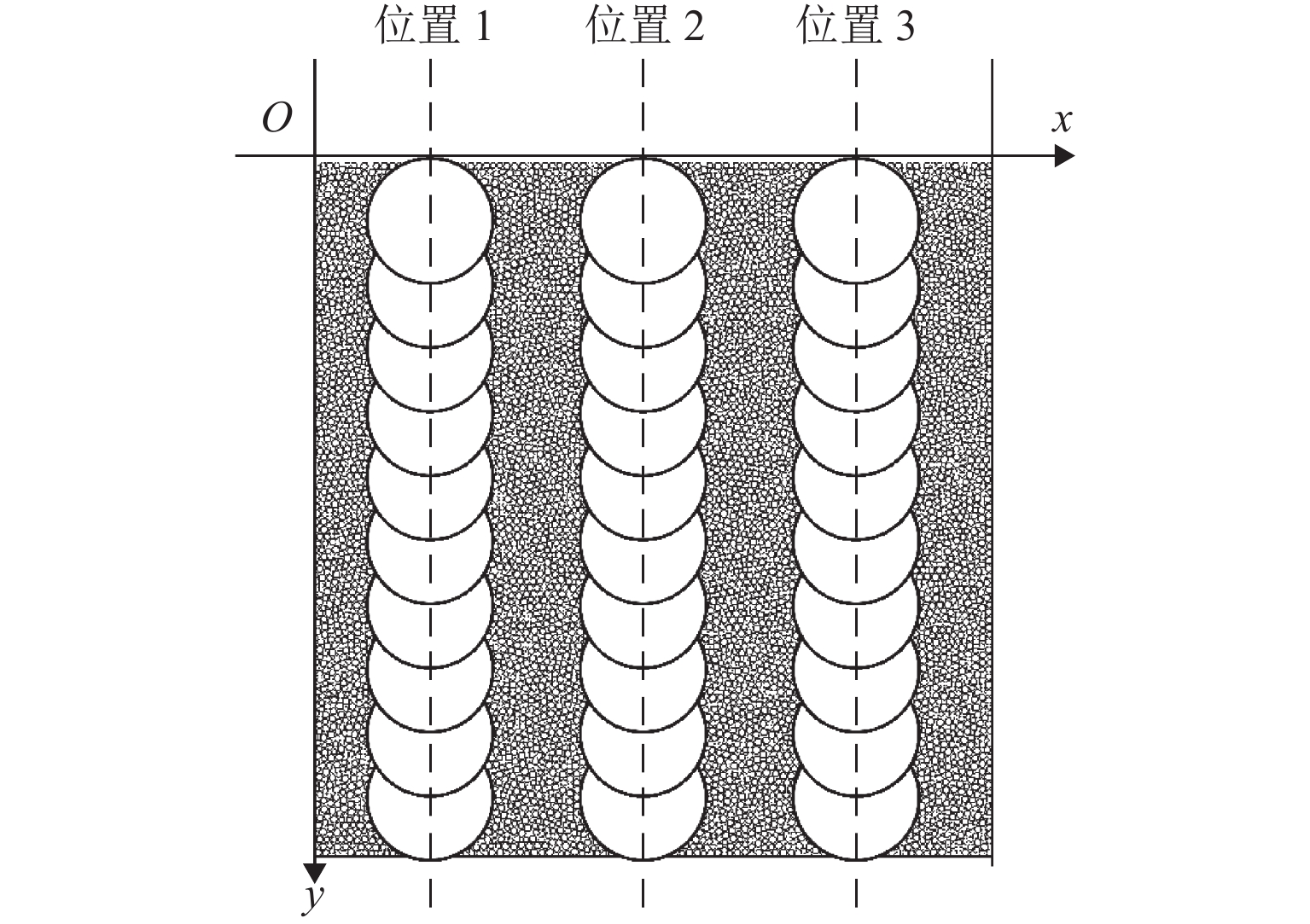
 下载:
下载:
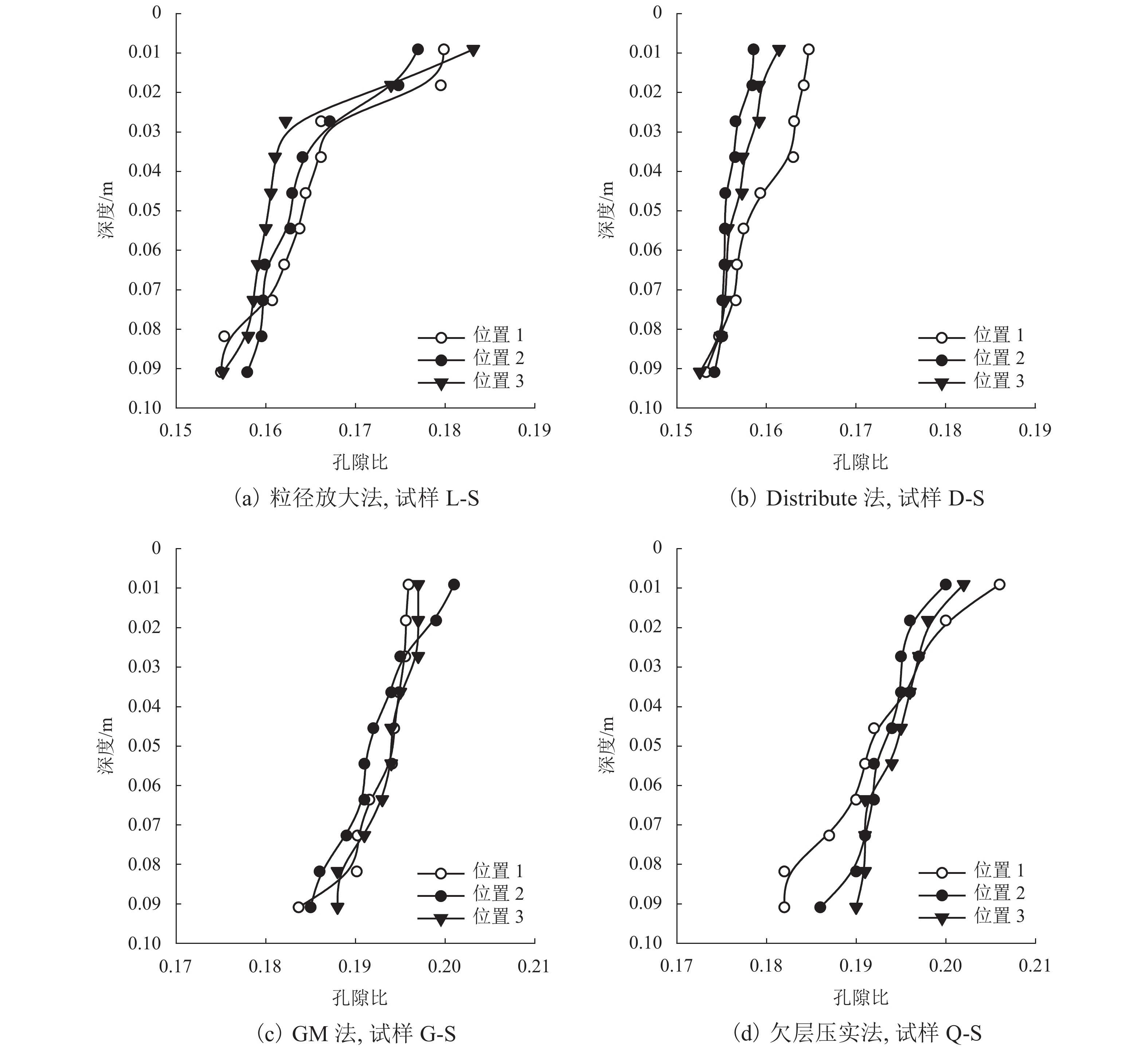
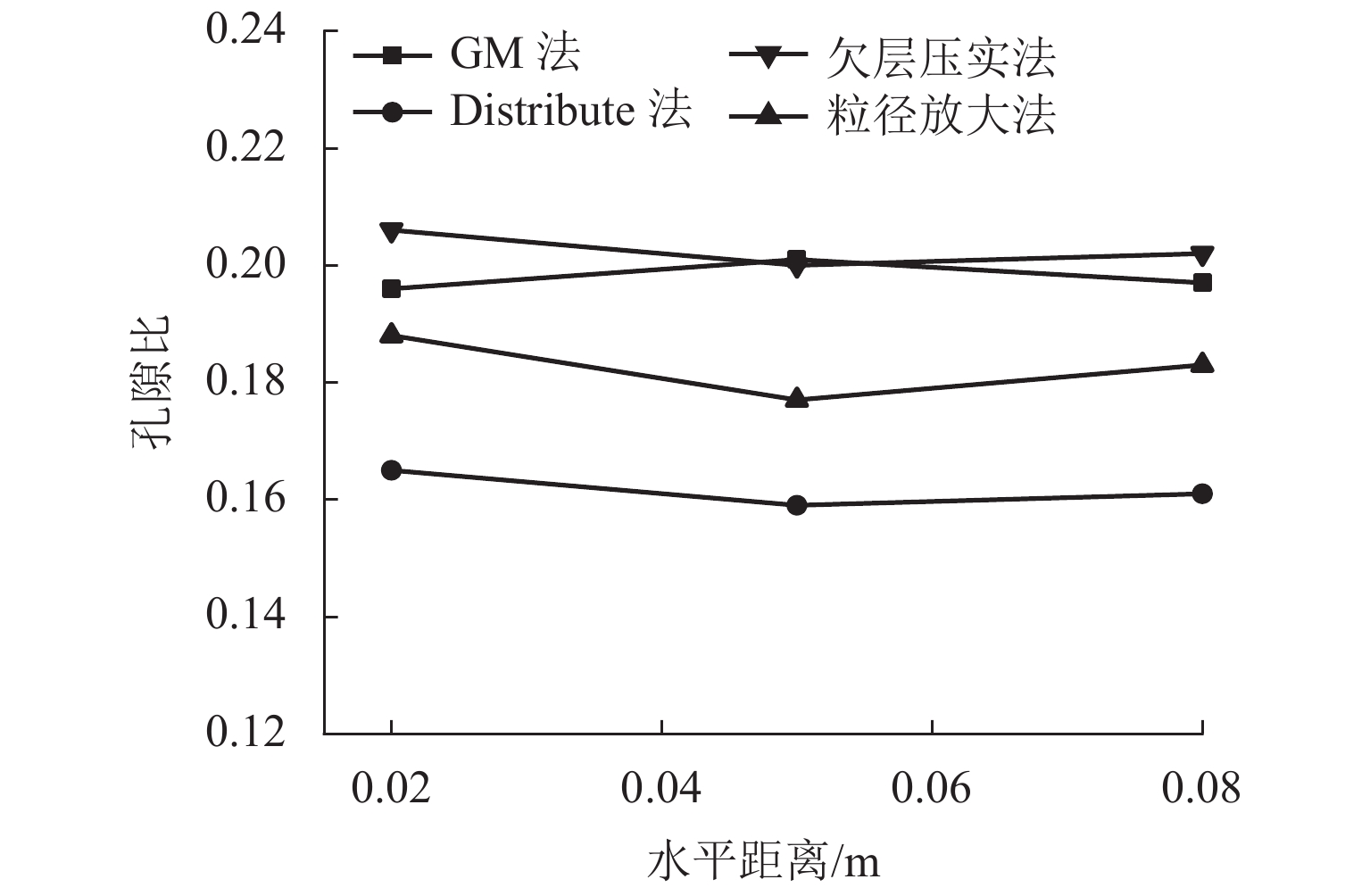
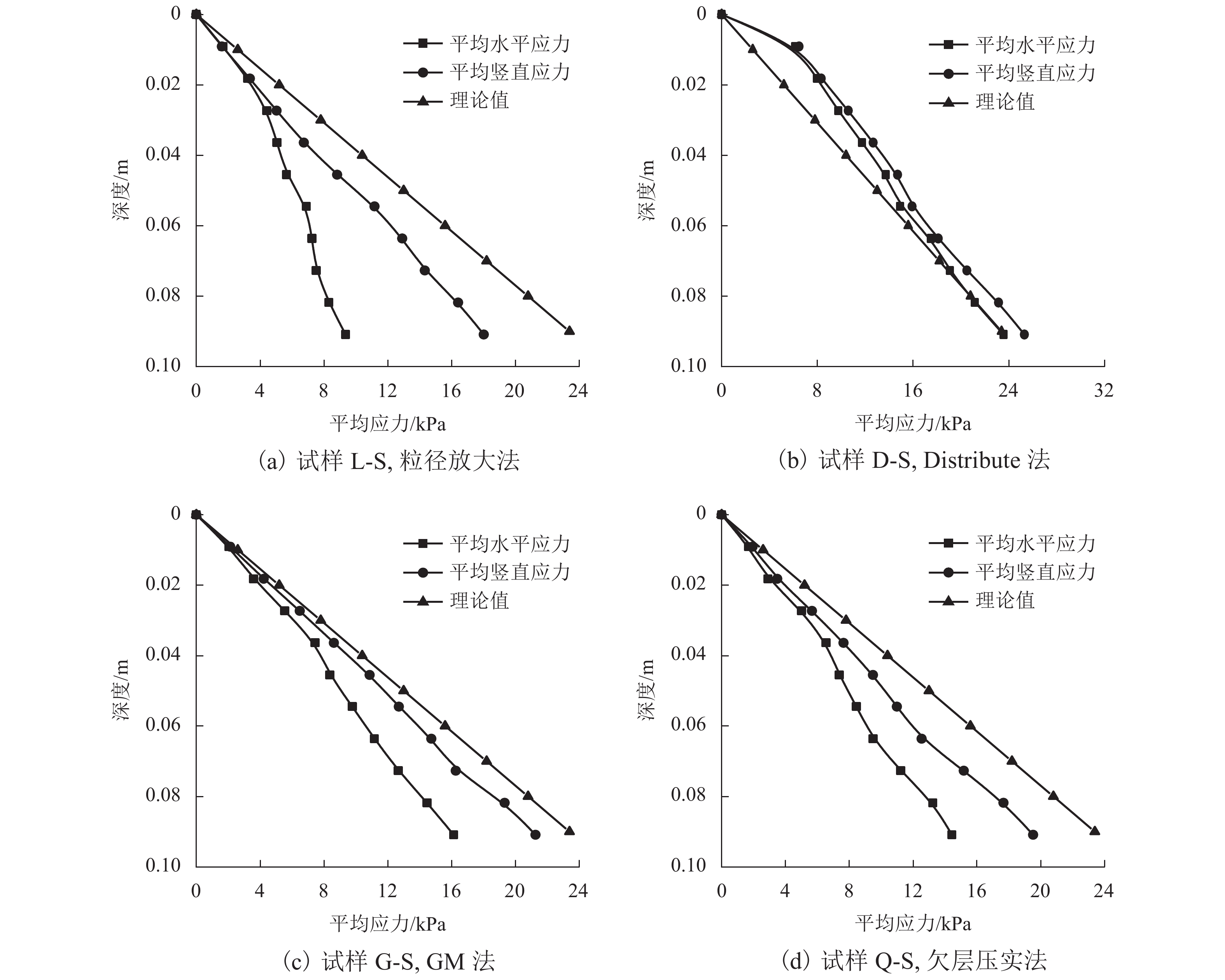
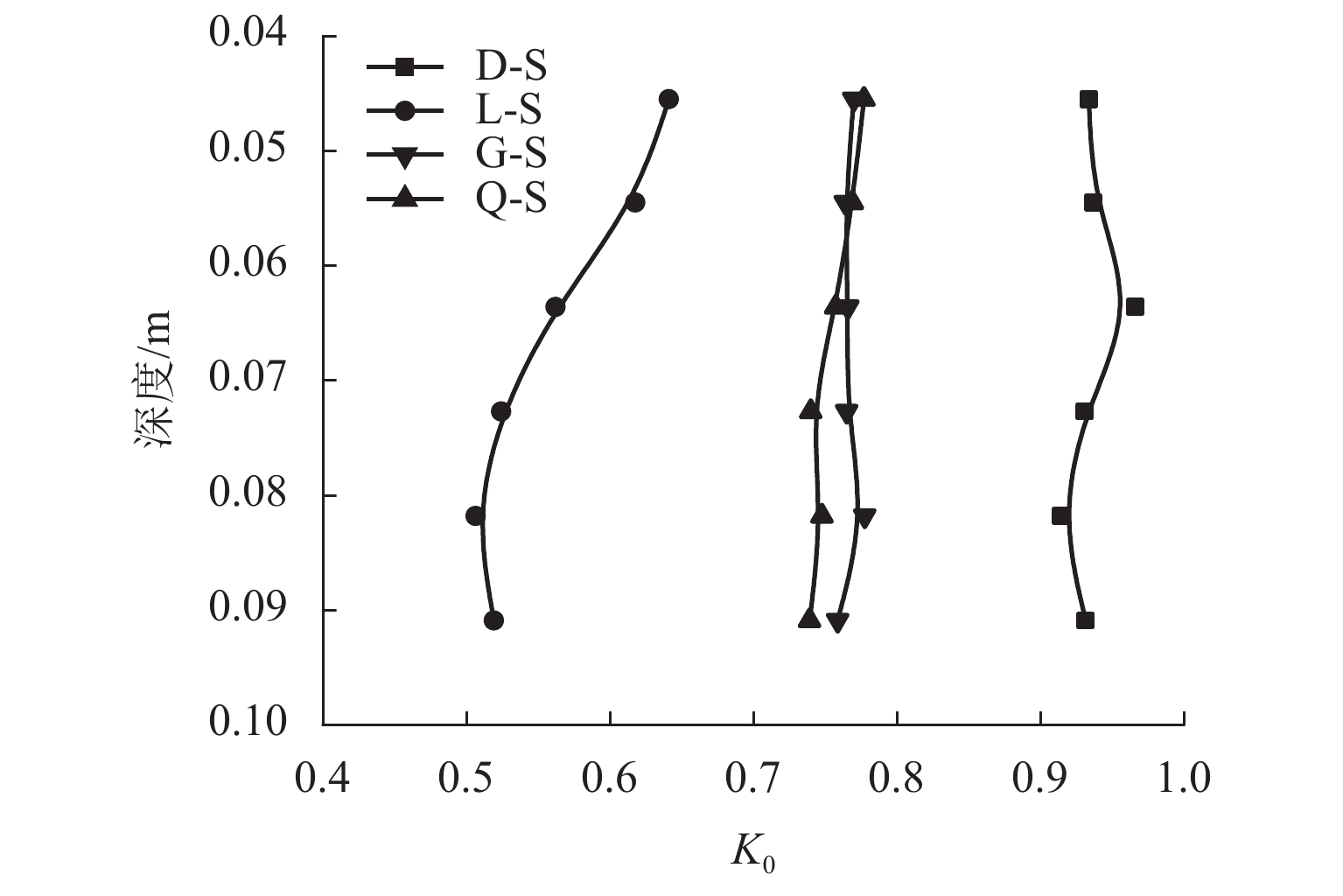
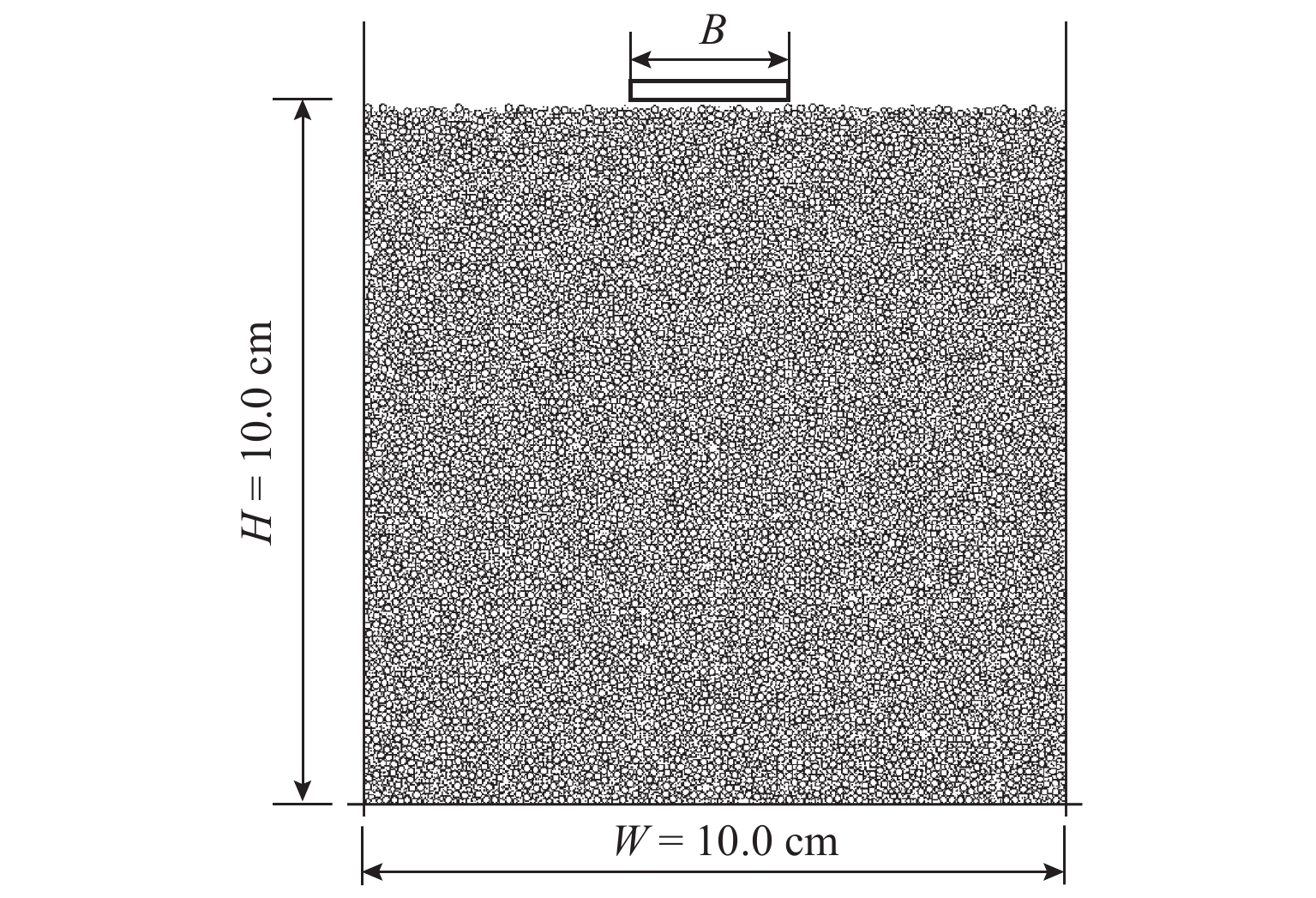
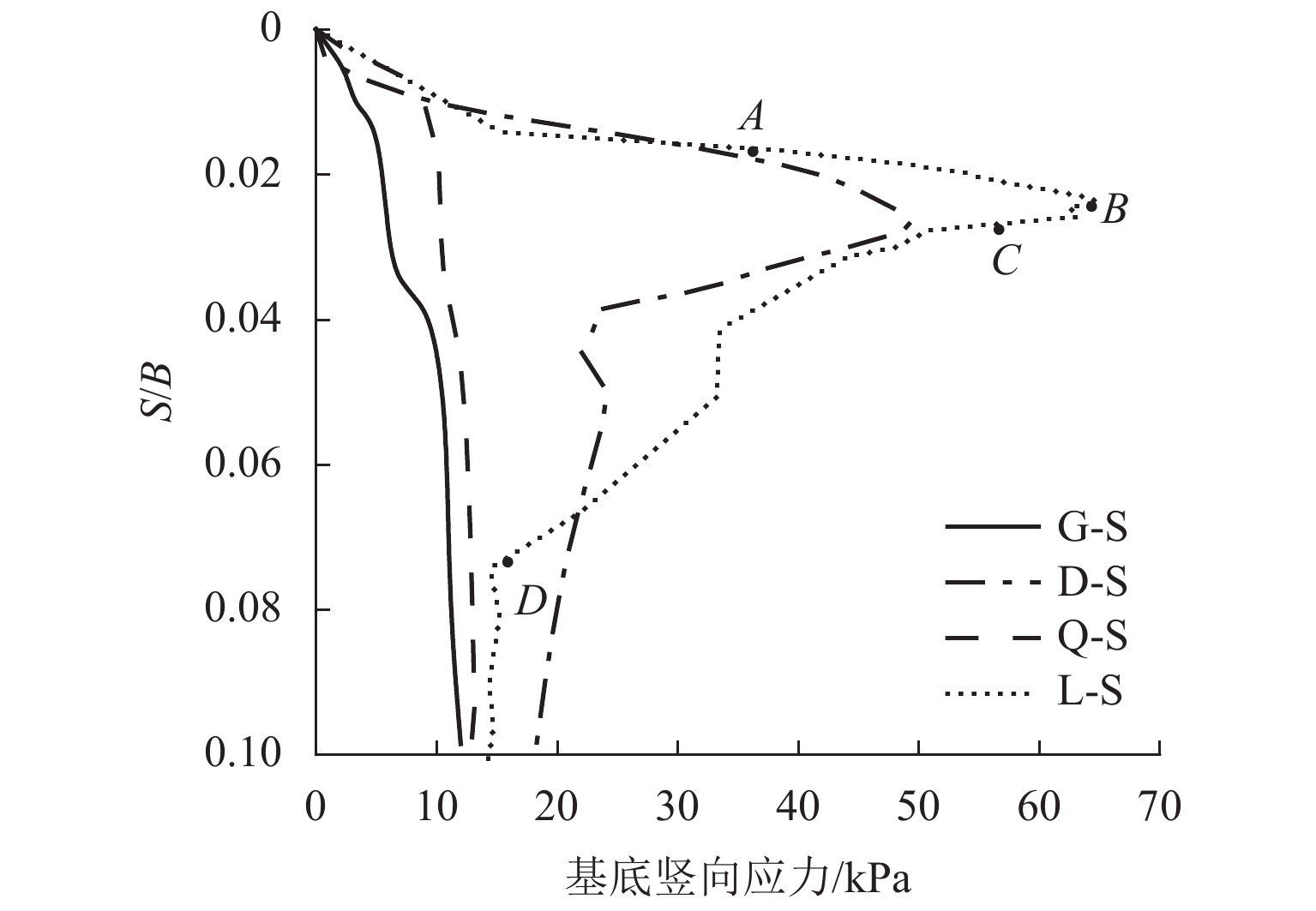

 百度学术
百度学术

